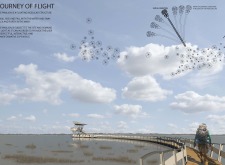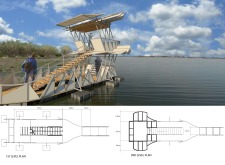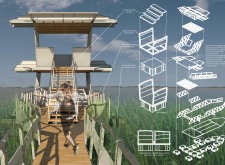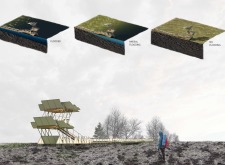5 key facts about this project
### Project Overview
The Journey of Flight Pavilion is situated within a dynamic aquatic environment, designed to engage visitors while adapting to changing water levels and environmental conditions. The intent of the project is to create a modular structure that encourages users to connect with nature, fostering a balance between architectural presence and the surrounding landscape.
### Adaptive Architectural Strategy
The pavilion features a floating modular design capable of responding to fluctuations in water movement. This architectural approach allows the structure to maintain stability while engaging with the natural elements. Key components include:
- **Floating Modularity**: The lightweight design facilitates movement with water fluctuations, ensuring structural integrity throughout various environmental conditions.
- **Interactive Pathways**: A gently curved pathway enhances visitor interaction with the habitat, incorporating adaptive elements such as floating plastic flotation buoys to maintain accessibility during seasonal changes.
### Material Selection and Sustainability
The material choices reflect a commitment to both functionality and environmental responsibility. Notable materials include:
- **Softwood Pine Decking**: Sustainable material used for walkways and steps, promoting a natural aesthetic.
- **Welded Aluminum Frame**: Provides strength while being lightweight and corrosion-resistant.
- **Canvas Canopies**: Offers shading and protection while contributing to the pavilion’s visual identity.
- **Recycled Plastic Flotation Buoys**: Enhances sustainability, ensuring the structure adapts to varying water levels.
These materials not only serve practical purposes but also contribute to an immersive visitor experience, enhancing the pavilion's connection to its natural setting.





















































